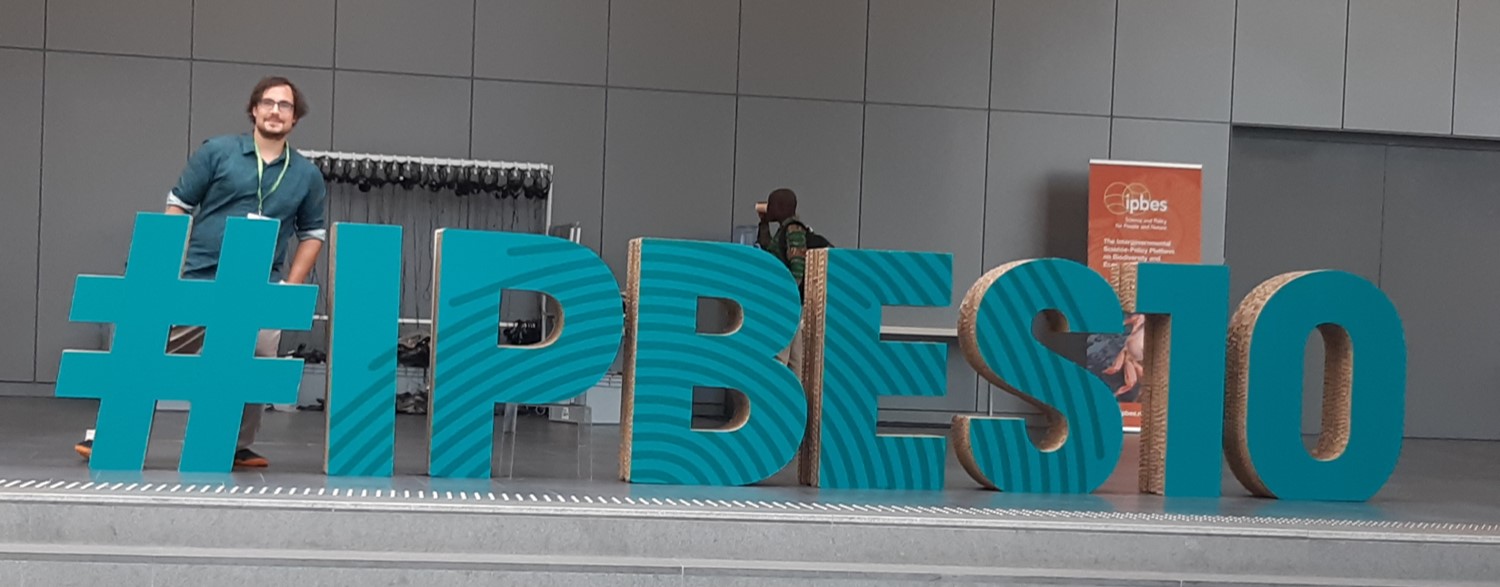
IPBES
What is the IPBES?
IPBES is short for Intergovernmental Science Policy Platform on Biodiversity and Ecosystem Services. As an intergovernmental organisation, it serves the purpose of improving the communication between scientists and policy-makers. Adopted in 2012 by the parties to the United Nations Convention on Biological Diversity (CBD), the platform currently includes 143 member states.IPBES - Invasive Alien Species Assessment
On 4 September 2023 a comprehensive assessment by the world biodiversity council (IPBES) on the state of biological invasions, their distribution, trends, impacts and their control worldwide as been released – the IPBES Assessment on Invasive Alien Species and their control.Over the past 4 years I have been part of the international expert team that worked on this report, being actively involved in chapter 2 on Status and Trends and leading the sceanrios and models taskforce of the assessment.
The report for the first time highlights the global dimension of biological invasions, their distribution, impacts and associated management and policy strategies worldwide. Some key findings of the report are:
Selected publications
Schwindt, E, August, TA, Vanderhoeven, S, McGeoch, MA, Bacher, S, Galil, BS, Genovesi, P, Hulme, PE, Ikeda, T, Lenzner, B, Nuñez, MA, Ordonez, A, Pauchard, A, Rahlao, SJ, Renard Truong, T, Roy, HE, Sankaran, KV, Seebens, H, Sheppard, AW, Stoett, P, Vandvik, V, Wilson, JRU & Meyerson, L (2023) Overwhelming evidence galvanizes a global consensus on the need for action against Invasive Alien Species. Biological Invasions. LinkRoy, Helen E., Pauchard, Aníbal, Stoett, Peter, Renard Truong, Tanara, Bacher, Sven, Galil, Bella S., Hulme, Philip E., Ikeda, Tohru, Sankaran, Kavileveettil V., McGeoch, Melodie A., Meyerson, Laura A., Nuñez, Martin A., Ordonez, Alejandro, Rahlao, Sebataolo J., Schwindt, Evangelina, Seebens, Hanno, Sheppard, Andy W., & Vandvik, Vigdis. (2023). IPBES Invasive Alien Species Assessment: Summary for Policymakers (Version 2). Zenodo. Link
Seebens, H., Meyerson, L. A., Rahlao, S. J., Lenzner, B., Tricarico, E., Aleksanyan, A., Courchamp, F., Keskin, E., Saeedi, H., Tawake, A., and Pyšek, P. (2023). Chapter 2: Trends and status of alien and invasive alien species. In: Thematic Assessment Report on Invasive Alien Species and their Control of the Intergovernmental Science-Policy Platform on Biodiversity and Ecosystem Services. Roy, H. E., Pauchard, A., Stoett, P. and Renard Truong, T. (eds.). IPBES secretariat, Bonn, Germany. Link
Outreach
Austrian Academy of Sciences Symposim: "Wie invasive Arten die Welt verändern"Rudolphina Magazine of the University of Vienna: Battling biological invasion
Factsheets:
Factsheet 1 – Invasive alien species: data on trends and impacts Link Factsheet 2 - The role of businesses in the management and governance of biological invasions Link Factsheet 3 - Invasive alien species affect protected areas and most natural ecosystems Link Factsheet 4 - Biological invasions on islands Link Factsheet 5 - Invasive alien species management and governance Link
CBD Kunming-Montreal Global Biodiversity Framework
The new biodiversity targets under der Kunming-Montreal Global Biodiversity Framework of the Convention of Biological Diversity (CBD) provide a comprehensive roeadmap towards biodiversity conservation for the near- (2030) and mid-term (2050) future. How these targets will be reached and what measures implemented across scales will decide on success and failure of the agenda. By working especially on indicators and scenarios for future biodiversity, I am aiming to contribute to this successful implementation.
Selected publications
McGeoch, MA, Buba, Y, Arlé, E, Belmaker, J, Clarke, DA, Jetz, W, Li, R, Seebens, H, Essl, F, Groom, Q, García-Berthou, E, Lenzner, B, Meyer, C, Vicente, JR, Wilson, JRU & Winter, M (2023) Invasion trends: An interpretable measure of change is needed to support policy targets. Conservation Letters, 16, 6, e12981. Link
Perino, A, Pereira, HM, Felipe-Lucia, M, Kim, HJ, Kühl, HS, Marselle, MR, Meya, JN, Meyer, C, Navarro, LM, van Klink, R, Albert, G, Barratt, CD, Bruelheide, H, Cao, Y, Chamoin, A, Darbi, M, Dornelas, M, Eisenhauer, N, Essl, F, Farwig, N, Förster, J, Freyhof, J, Geschke, J, Gottschall, F, Guerra, C, Haase, P, Hickler, T, Jacob, U, Kastner, T, Korell, L, Kühn, I, Lehmann, GUC, Lenzner, B, Marques, A, Motivans Švara, E, Quintero, LC, Pacheco, A, Popp, A, Rouet-Leduc, J, Schnabel, F, Siebert, J, Staude, IR, Trogisch, S, Švara V, Svenning, J-C, Pe'er, G, Raab, K, Rakosy, D, Vandewalle M, Werner, AS, Wirth, C, Xu, H, Yu, D, Zinngrebe, Y & Bonn, A (2022) Biodiversity post-2020: Closing the gap between global targets and national-level implementation. Conservation Letters, 15, e12848. Link
Vicente, JR, Vaz, AS, Roige, M, Winter, M, Clarke, DA, Lenzner, B & McGeoch, MA (2021). Existing indicators do not adequately monitor progress towards meeting invasive alien species targets Joana. Conservation Letters, 15, e12918. Link
Essl F, Latombe G, Lenzner B, Pagad S, Seebens H, Smith K,
Wilson JRU, Genovesi P (2020) The Convention of Biodiversity (CBD)’s
Post-2020 target on invasive alien species — what should it include
and how should it be monitored? NeoBiota, 62, 99-121. Link